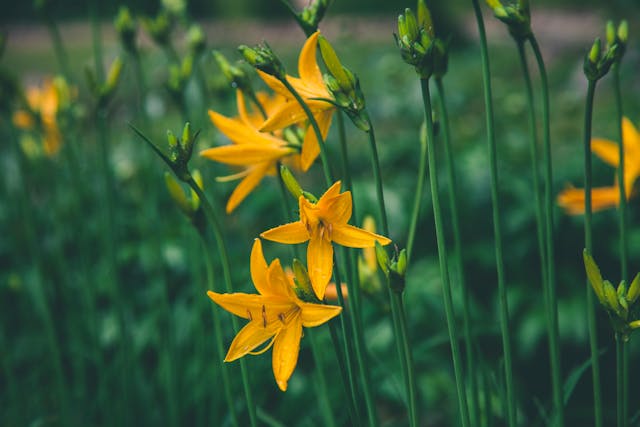Gardeners on social media are showing interest in this yard design as warmer, wetter weather affects every area.
This year, rain gardens are making a comeback in yard trends, thanks to unusually mild winters worldwide.
You may end up with a damp yard (or worse, a flooded one) when your garden experiences heavy rainfall. Even better, rain gardens help distribute the excess water throughout the rest of your yard. They are made to survive severe downpours. This protects your plants from excessive moisture.

The purpose of a rain garden is to turn a garden bed into a storm drain. The water in your yard will “drain” into the center region that you have created a little hole or depression in. Subsequently, as time passes, the depression releases water into the soil, progressively distributing it among the plants in your garden.
Over the course of the last year, interest in the advantages of this adaptable garden has increased on GardenTok; a video showing one discovered in a parking lot has had close to 100,000 views, and this explanation from @robertmberger has received over a million.
The first step in building your own rain garden is figuring out where and how your yard’s greatest water accumulations occur. When designing, take into consideration any spots where big puddles naturally develop, a sloping yard that directs rain toward the bottom, or gutters that flow off into the ground.
Basically, you should avoid building a rain garden in an already-soggy region of your yard and instead look for a site with dry soil since a rain garden has to be able to dry up rapidly. There are many methods to reroute water into your rain garden, depending on the kind of runoff you’re seeking to reduce: you may use PVC pipes, make little indentations in the ground for paths, or design your rain garden into a slope.
Among the most popular methods for assisting water in finding its course are rock pathways: Just make a broad, recessed rock walkway that goes straight into your rain garden at the top of a hill or moist area.
Three planting “zones” that change according to the amount of rainfall that the soil receives are a characteristic of a traditional rain garden. Since the center of the rain garden is usually the deepest and gets the most flooding, you should choose plants for this area that do well in damp circumstances. Even though the second layer of plants won’t get as wet, they still need to be able to withstand moisture. Plants in the third zone should continue to be mostly dry.

Choose native plants for your rain garden because they are healthier for the soil and animals in your space, and because they are adapted to the environment in which you live. Additionally, native plants often have stronger root systems, which free up more soil space for the water to have somewhere to go during floods.
Make sure you’re far enough away from your house (and your neighbors’, too) before you start developing your rain garden. If they are situated too near to your home’s foundation, they may cause it to deteriorate. Before you begin, make sure you can dig up the area you want to turn into a rain garden in a safe manner.
